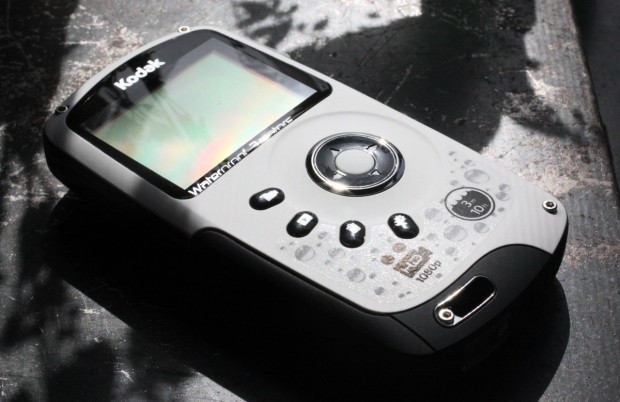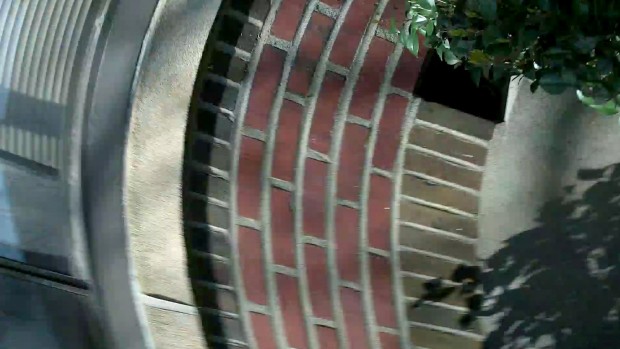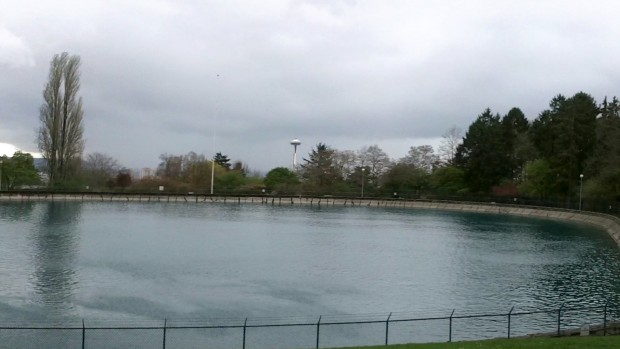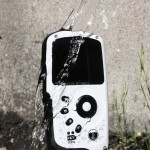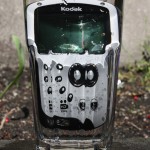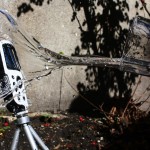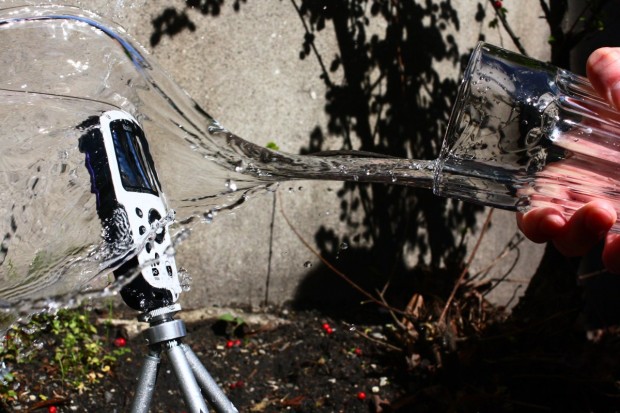
Short version: The 1080p is pretty worthless, but if I had to pick one camcorder to take on vacation, the Playsport is the easy choice.
Features:
- 1080p, 720p (30/60), VGA video modes, 5MP stills
- Waterproof to 10ft
- It doesn’t say shockproof exactly, but it survived a couple throws
- 2″ LCD screen
- MSRP: $150
Pros:
- 60fps mode is good for slow-mo in a pinch
- Waterproof, feels solid
- Video quality not so bad if you know what to avoid
Cons:
- Huge amount of skew, especially visible in 1080p
- Switching between underwater and regular mode is a pain (why not a button?)
- Video quality, like all pocket cams, is questionable
Full review:
If you’ve read any of our other reviews of pocket cameras, you probably know what to expect here, so I won’t waste your time. The Playsport is the latest and best pocket camcorder in a series: the Zi6, then Zx1, then Zi8. They’ve all had similar form factors and similar performance; the Zi8 had 1080p and the Zx1 was weather-proof, but the Playsport obsoletes both of them, and at a price that pretty much can’t be beat. $150? Yes, please.
Adjust your expectations, however: just because it says 1080p doesn’t mean you should use it. 1080p is a lot of pixels to be taking from a tiny sensor, and through such a small lens. Personally, I wouldn’t recommend shooting in 1080p at all. Not only is sharpness unreliable due to the lens, but its aggressive compression wipes out any edges and fine detail when there is any movement at all. And the skew – oh, the skew! If you’re not familiar with it, skew is what happens when, essentially, the bottom of the image is taken at a different time than the top or middle. It results in weird distortion most visible in straight lines, but you’ll also see it in faces. Here is a very extreme example, from when the camera was whipping pretty quickly across a brick wall.
Yeah, that used to be straight. Keep in mind this happens on all cheap camcorders; Kodak is no exception.
Using 720p and the 60fps mode won’t reduce your image quality much and should reduce skew, so I’d just use those. Here are two more images from the camera; if you look at them full size you can really see how the detail just disappears in things like the trees and water.
I’d like to provide a straight-from-the-camera clip where you can see this stuff, but really, it’s hosting a 100MB file for the purpose of seeing the above stills in context. I hope you don’t mind taking my word for it: video is adequate, as good as others on the market, but there’s a reason more expensive cameras cost that much. Once you shoot a little bit, you’ll be acquainted with the shortcomings of camcorders like this one. Quality is trickling down and resolution is the first we’re seeing of it.
The camera also has a fixed focus, like most pocket cams. That means you won’t be able to focus on things less than about 3 feet away (40 inches to be precise). Troublesome, but not a deal-breaker, and it’s the same issue in every other camera at the price.
Waterproofing is pretty complete. It’s rated to 10ft under, which isn’t much, but plenty for scuba diving or hanging around the pool. The “H20 mode” doesn’t seal things any tighter — I think it just adjusts color for the blue shift that happens underwater, making things look a little more like they do to your eye. It appears extremely warm outside the water, so make sure you turn it off if you’re not going in.
It doesn’t say it’s rugged, really, or shockproof, but it seemed pretty sturdy to me, and its sealing meant no mud could get anywhere sensitive, so it got the same treatment as the rest of the roundup cameras in this video:
I had a lot of fun splashing this thing and dropping it in the water before that, though, so here are some pictures for your enjoyment:
Yes, good fun. Like I’ve always said, it’s not that you have to abuse these cameras to get any worth out them, it’s peace of mind that you’re buying.
As for the device’s layout and form factor: it’s comfortable to use and reasonably intuitive. Once you get the feel of the D-pad (not particularly responsive) the rest comes easily — there isn’t much to configure, and it mounts easily. Interestingly, it identifies as the “Zx3” and not the Playsport. Guess the software team didn’t get the memo. It comes with software to manage the videos, but you can just as easily drag them off to use in something better. The spring-loaded doors that protect the SD card and ports are fun and intuitive to operate, although there is a greater chance of them being sprung by accident, than, say, Fujifilm’s two-direction lock.
One thing to note: it’s definitely a right-handed device. The buttons aren’t laid out for leftie thumbs reach. Just something to consider.
Sound is a slightly weak point; nobody expects much out of these cameras, but is it really so much to ask to have a decent mic or two? In an underwater camera, it’s unavoidable, I guess, but that doesn’t change the fact that sound is kind of tinny and wind just blows right into it.
Conclusion
So, I seem to have pointed out quite a few faults with this thing. True — but first, these faults are pretty much present in most cameras and camcorders at this price (or higher), and second, this thing costs $150. Your argument is invalid. $150 for a underwater-sealed, pocket-going, 720p/30/60-shooting camera. I say I’d take it on vacation with me anywhere not because it’ll provide the best video or stills, but because I don’t have to worry about it, it’s compact, and it’ll live through just about anything. Every family should have something like this around.
